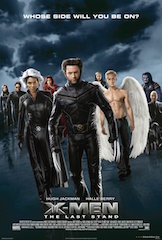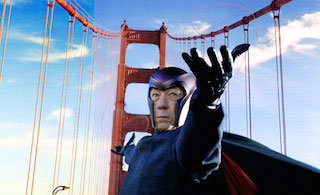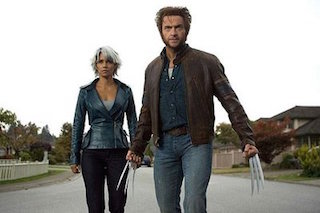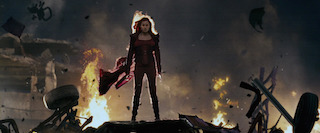 Everyone wants to be accepted. Even those who spurn acceptance do so to be accepted for not accepting who they are. Perhaps the biggest theme of any X-Men story is identity and being accepted. The whole premise of the original X-Men movie dealt with Rogue’s struggle with her identity and Logan’s desire to remain outside of acceptance by a wider community. After that first film, comic book fans longed for these new movies to gain a wider acceptance, as well. They gained much of it when Marvel’s Spider-Man and X2 were both critically well-received. Superhero movies had entered a new era.
Everyone wants to be accepted. Even those who spurn acceptance do so to be accepted for not accepting who they are. Perhaps the biggest theme of any X-Men story is identity and being accepted. The whole premise of the original X-Men movie dealt with Rogue’s struggle with her identity and Logan’s desire to remain outside of acceptance by a wider community. After that first film, comic book fans longed for these new movies to gain a wider acceptance, as well. They gained much of it when Marvel’s Spider-Man and X2 were both critically well-received. Superhero movies had entered a new era.
By 2006, this new era of superhero movies was gaining incredible steam and legitimacy. Everyone expected the third X-Men film could deliver an even more satisfying experience than the previous installments. When it premiered, satisfying was the last thing anyone was using to describe the movie.
X-Men: The Last Stand centers on both Jean Grey, who had sacrificed herself at the end of X2 to save her mutant friends, and the invention of a “cure” for mutant powers developed by Warren Worthington II, the father of X-Men character Angel. The movie’s driving force is the human and mutant reaction to the developed cure. Some mutants, such as Anna Paquin’s Rogue, are open to the idea of being cured, seeing their powers as a curse. Others, such as Magneto and dozens of other mutants, take Worthington’s serum as an affront to the clearly superior mutant race. A newly resurrected Brotherhood of Mutants has its ranks swell as Magneto and Pyro recruit mutants to violently oppose Worthington Labs and find a way to destroy the cure. They find their upper hand in the highly unstable and sinister psychic alter-ego of Jean Grey, “Phoenix”, which had unleashed from its repressed state after Jean’s traumatic near/real death experience. 
Thus, the two major plot lines begin to converge and the final machinations of the third movie are set in motion. Jean escapes to her childhood home after initially being in possession of Xavier and the X-Men. Professor Xavier and Magneto converge on her home and try to bring back Jean and repress Phoenix once again. This time, however, Xavier is unsuccessful and is killed by Phoenix and Magneto barely escapes with this life. Yet, Phoenix joins the Brotherhood in order to stop the cure and the Brotherhood descends on Worthington Labs, which houses itself on Alcatraz Island.
This final battle scene may be one of the biggest problems people have with Brett Ratner’s X-Men movie. He replaced Singer, who left to do Superman Returns, and also Matthew Vaughan, who pulled out of the project citing family problems and too much studio control. It boasts incredible special effects, especially the transformation of Iceman into his full ice form when battling Pyro and, of course, the power of the Phoenix. However, the opening big CGI-sequence when Magneto lifts the Golden Gate Bridge to allow all the mutants to run onto the island is a sign of things to come. It’s silly, unnecessary, and action-padded. The romance in the final moments between Logan and Jean is a tension they played with in previous movies but feels unearned in the midst of so much action. Logan’s final act is sacrificial, but unlike his sacrifice in the first X-Men movie or Jean’s in the second, this one doesn’t carry the same weight. And lastly, the final moment and post-credit scene are so bad.
 While I do not like some of the final third of X-Men: The Last Stand, I actually liked it more than I remembered and more than the clamorous din of loathing opinion commonly reserved for this movie. The final installment in the original X-Men movies wrestles with motifs typical and well-travelled within the comic book universe of the X-Men. Themes of being and what it means to be human, love, and acceptance are at the root of The Last Stand’s narrative.
While I do not like some of the final third of X-Men: The Last Stand, I actually liked it more than I remembered and more than the clamorous din of loathing opinion commonly reserved for this movie. The final installment in the original X-Men movies wrestles with motifs typical and well-travelled within the comic book universe of the X-Men. Themes of being and what it means to be human, love, and acceptance are at the root of The Last Stand’s narrative.
Mutant powers are to be feared. Much like Captain America: Civil War and Batman v. Superman deal with the fallout of destruction and loss from heroic battles, humans do not know how to handle the unknown and respond in fear. While the solution in both of those movies is left up to legal and political means, this movie wrestles with identity and power in the face of fear.
Rogue is one of many mutants intrigued by losing her powers. She longs for human contact, since her powers of absorbing mutant abilities prevent her from doing so, and so her response out of a longing for acceptance is to take the cure. While her ultimate decision is not dealt with in the movie, it strikes home for anyone who has ever made a decision to appear normal. Conformity breeds acceptance, but can be a choice made out of fear of missing our or the greater fear of being an outcast. She is the one character not only different from humans but different from her fellow mutants. The one place where she should be accepted, Charles Xavier’s School for Gifted Youngsters, has no place of lasting connection for her, so she does the one thing she know will allow her to have a connection; lose her powers. While on the surface it might seem like a cowardly act, I see Rogue’s action is not placing her identity in how she was born but placing her identity somewhere else. It is an admission of weakness while also finding strength in the community and relationships forged around her.
By contrast, Magneto and the Brotherhood of Mutants have a more aggressive response to the challenge of identity. Instead of fleeing, Erik and his fellow mutants choose to stand and fight. Like any repressed minority built on violent and elevated rhetoric, they take the battle to those who threaten them and bring violence in response to the threat. They function like Hitler’s National Socialist German Worker’s Party but instead of blaming the minority, they blame the majority and trumpet their minority as genetically superior. By heightening the worst of their identity and placing it in a superior place to others, fear rules over them and, to borrow slightly from the wise and powerful Yoda, it leads to anger, hate, and ultimately their own and others’ suffering.
The movie’s virtuous path is a third way of a surprisingly Christ-like nature. Charles Xavier, who gives his life for his ideology, always believed mutants needed to work to create bridges between mutants and humans. Hank McCoy, The Beast, was a student of Xavier’s and likewise exposed this philosophy in working with the US Government and the UN. What Magneto saw as weakness and compromise, Xavier believed to be as strength and redemptive cooperation. Arguably, the best cinematic moment of the movie visually espouses Charles’ philosophy.
As Magneto threatens to attack the humans guarding the Alcatraz facility, the X-Men finally make it to the island. Instead of joining up with the humans to repel the Brotherhood’s attack, the X-Men separate themselves and place themselves between the attacking mutants and the defending humans. They “stand in the gap” between humans and mutants, shielding not only the humans from mutants but the mutants from the humans. Xavier believed their mutant powers were not meant to be a sign of superiority, but an opportunity to further al humanity. The loving role of a superhuman, like the mutants, was the role of a humble servant. Using identity and power to further one’s own ends/agendas are replaced by a posture of servanthood, considering others’ needs before their own. It echoes Jesus’ words to his disciples after he had been revealed as fully divine, superhuman, at the Transfiguration:
“If anyone would be first, he must be last of all and servant of all.” Mark 9:35


